
views
Keeping Rattlers Away from Your House

Seal any gaps under your house to keep rattlers from sneaking in. Take a walk around your house and look for any cracks or gaps in the wood or concrete. These small openings make great habitats for rattlesnakes. To prevent rattlers from living in the bottom of your house, fill any gaps larger than ⁄4 inch (0.64 cm) with a filler like expanding foam. You can purchase expanding foam at any hardware store.
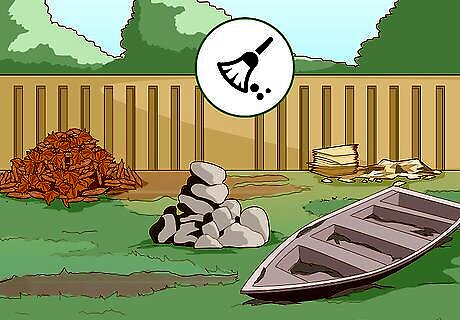
Clean up your yard so that rattlers won’t have a place to live. If you make your property inhospitable to passing rattlesnakes, they won’t stick around and make a home in your yard. Do this by removing any possible hiding spots for snakes and by tearing down any places where they could build a nest. This includes: Piles of boards or debris. Mounds of branches, sticks, and leaves. Piles of rocks. Old and unattended vehicles or boats.
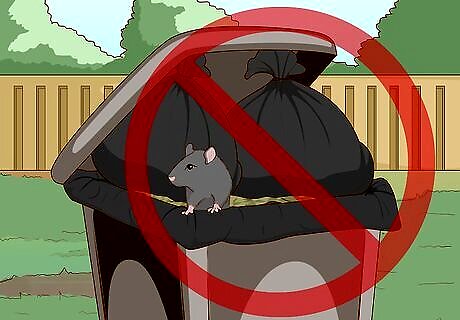
Keep rodents out of your yard by removing their food sources. Snakes are carnivorous and primarily eat small mammals like rats and mice. If your yard is rodent-free, snakes won’t linger looking for a meal. The best plan is to remove the food that mice and rats eat. By removing rodents’ food, you’ll keep both rodents and snakes away from your yard. You can: Pick up outdoor pet food every night. Securely close trash-can lids so rodents won’t eat your garbage. Keep your compost in a sealed container, not lying on the ground.
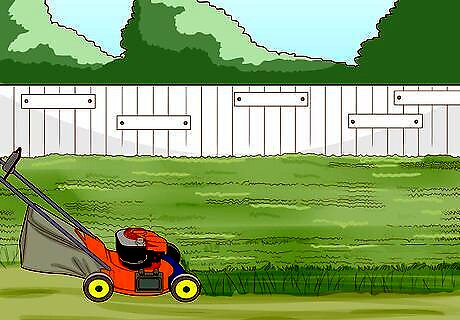
Mow weeds and grasses in your backyard to destroy snake habitat. Snakes will look for cover when deciding where to live and hunt. If your yard is full of high grass or large patches of weeds, it will attract snakes. To keep snakes away, mow your lawn regularly and keep weeds trimmed. Cut any weed clumps that grow higher than about 5 inches (13 cm). If your property contains a large field, mow the field as well. Long grass is an inviting habitat for rattlers, and if there’s high grass anywhere near your yard, rattlers may come crawling in.

Call animal control if a snake stays in your yard. If a rattlesnake does make its way into your backyard, do not panic. Send any kids and pets indoors, and make sure the rattler doesn’t approach the house. If it lingers for longer than 30 minutes or has built a den in your yard, call animal control to remove the snake. If you have made your yard as unfavorable to a snake as possible, the snake should leave if given the chance.
Installing a Rattlesnake-Proof Fence
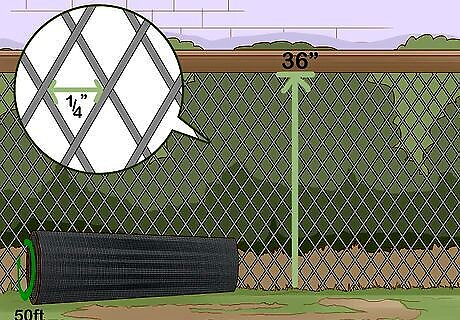
Purchase snake-proof fencing at a local hardware store. If you live in an area that gets rattlesnakes, you’ll be able to find many stores that stock snake-proof fencing. Check local hardware stores, garden supply shops, and home-supply stores. Snake-proof fencing should be solid or have mesh gaps no larger than ⁄4 inch (0.64 cm) and should be at least 36 inches (91 cm) tall. Snake-proof fencing isn’t cheap. A single 50 ft (15 m) roll can cost about $60 USD. However, this cost is worth it to assure your personal safety and peace of mind.

Choose an area of your backyard you’d like to cordon off from snakes. Due to the cost of the snake-proof fencing, you may not be able to fence off an entire large backyard. Instead, choose a specific zone you’d like to keep snake-free. This could be a children’s play area, the patch of grass where you walk your pet, or the section of yard nearest your back door.

Dig a trench 6 in (15 cm) deep so snakes can’t crawl under the fence. To prevent gaps between the bottom of the fence and the ground, use a shovel to dig a narrow trench 6 inches (15 cm) deep around the perimeter where you plan to install the snake-proof fencing. When you're digging, make sure that the trench is uniformly deep along its entire length.
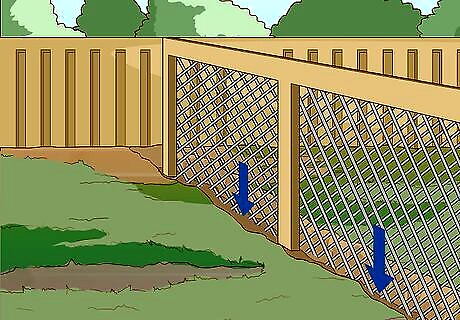
Install the fencing in the trench you've dug. Once you've dug your trench, lay out the fencing in the trench. Unroll the entire length of the snake-proof fencing material and install it all at the same time. Make sure that the bottom of the fencing is touching the bottom of the trench. If there are any gaps between the bottom of your installed fence and the ground, rattlers will crawl right in.
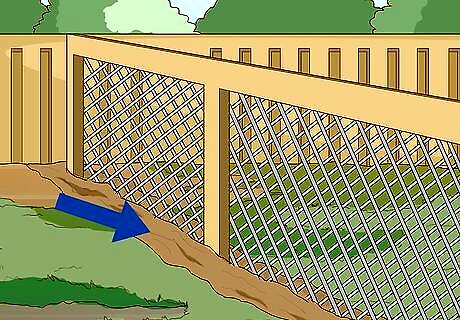
Bury the bottom of the fence once it's in position. Use the shovel again to loosely bury the bottom of the fence. Once the fence is covered in dirt, smooth out the dirt and make sure the fence is standing securely.
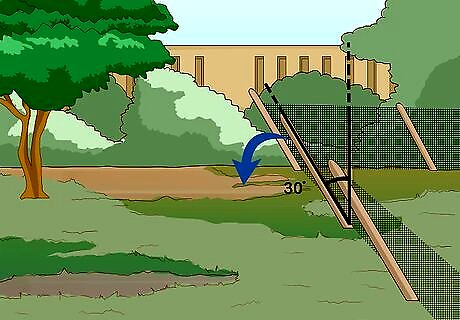
Slant the fence outwards at a 30° angle so snakes can't climb it. Once the bottom of the snake-proof fence is buried, push the fence outward (away from your backyard) until it’s leaning at a 30° angle. Then use your foot to stamp down the soil surrounding the fence. Rattlesnakes won’t be able to shimmy up the fence if it’s leaning outward at this angle.

Clear any tree branches or vegetation near the fence. Rattlesnakes will be able to climb up the branches and over the fence. To prevent this, remove any small trees, overhanging tree branches, or large vegetation stalks within 2 feet (0.61 m) of the fence. If you need to install support stakes to hold up the fence, place them on the inside of the fence. If they’re on the outside, rattlers can crawl up them.
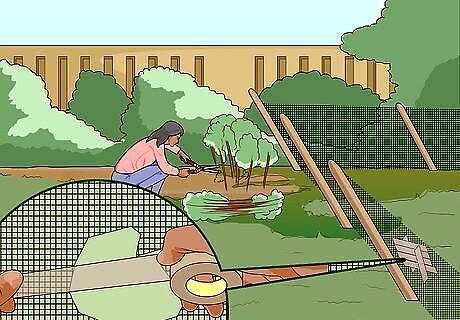
Maintain the fence as needed to keep snakes out. Over time, sections of your snake-proof fence may collapse or be worn down by the weather. Take a monthly walk around the perimeter to make sure that the fence is still intact. If you spot any breaks in the fence, remove the damaged section and install a new section of fencing. If there are only 1 or 2 lightly damaged sections of fence, you can patch them up with slick packaging tape. You can also maintain the fence by cutting down any new growth on encroaching tree branches or bushes.




















Comments
0 comment